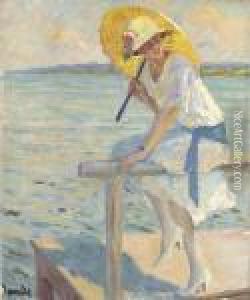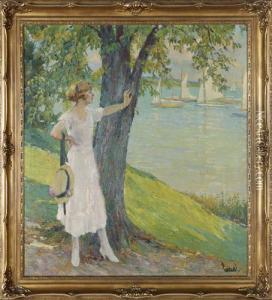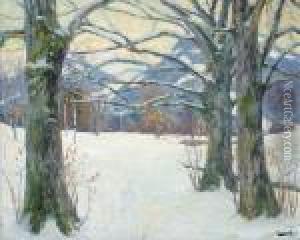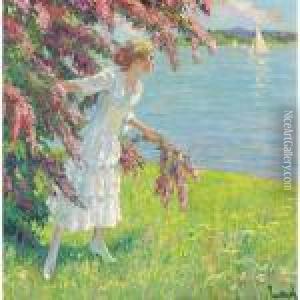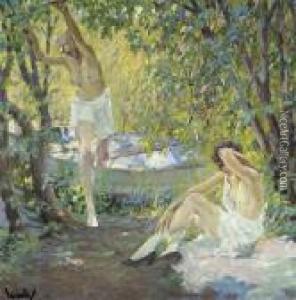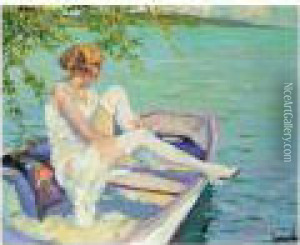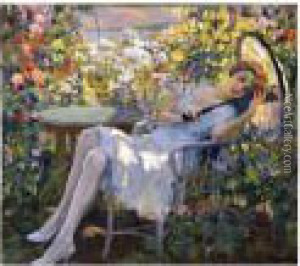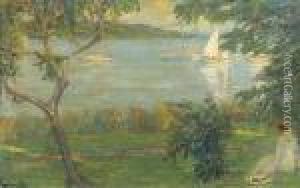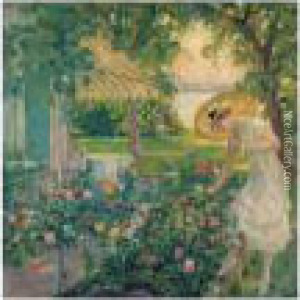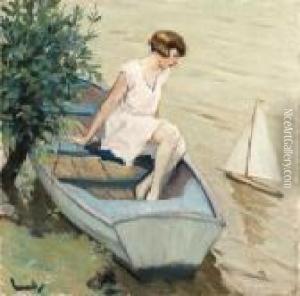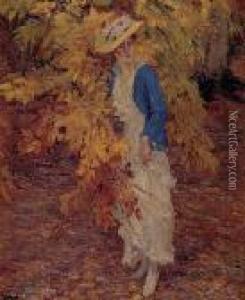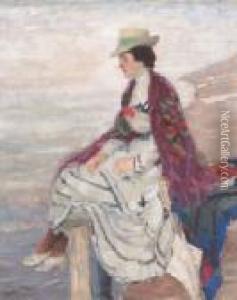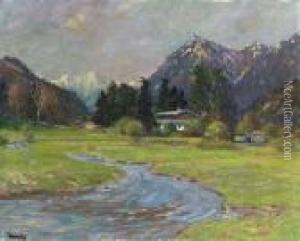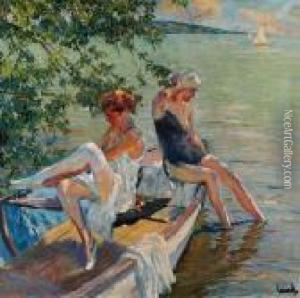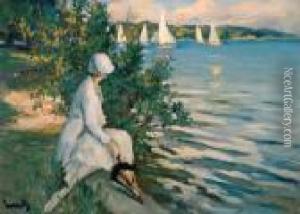Edward Alfred Cucuel Paintings
Edward Alfred Cucuel was an American painter known for his Impressionist works, predominantly featuring landscapes, figures, and portraits. He was born on August 6, 1875, in San Francisco, California. From a young age, Cucuel demonstrated a strong inclination towards art, prompting him to pursue an artistic education.
At the age of 14, he moved to Paris to study at the École des Beaux-Arts, a prestigious art institution. He honed his skills there and later attended the Académie Julian and the Académie Colarossi, where he was influenced by the vibrant art scene of Paris at the turn of the century. Cucuel was particularly influenced by the Impressionist movement, which is evident in his use of light and color.
In 1896, Cucuel returned to the United States and worked as an illustrator for newspapers and magazines in New York City. However, his stay in the U.S. was short-lived. The allure of Europe's art scene drew him back, and he spent most of his professional life in Germany and France. He settled in Munich, joining the artists' colony at Schleissheim Palace, and later lived by Lake Starnberg in Bavaria.
Cucuel was well-regarded for his depictions of leisurely scenes that often included elegantly dressed women in outdoor settings. His work was characterized by vibrant colors, fluid brushwork, and a keen sense of light, capturing the idyllic and serene atmosphere of his subjects. He enjoyed a successful career, exhibiting his paintings in various salons and galleries across Europe.
During World War I, Cucuel served as an interpreter due to his fluency in French and German. After the war, he continued to paint and exhibit his work. In the 1930s, as the political climate in Europe became increasingly unstable, Cucuel decided to return to the United States. He settled in Pasadena, California, where he continued to paint until his retirement.
Edward Alfred Cucuel passed away on April 18, 1954, in Pasadena. His artworks remain in private collections and museums, and he is remembered as a significant contributor to the American Impressionist movement, with a European influence that gave his work a distinctive quality.
